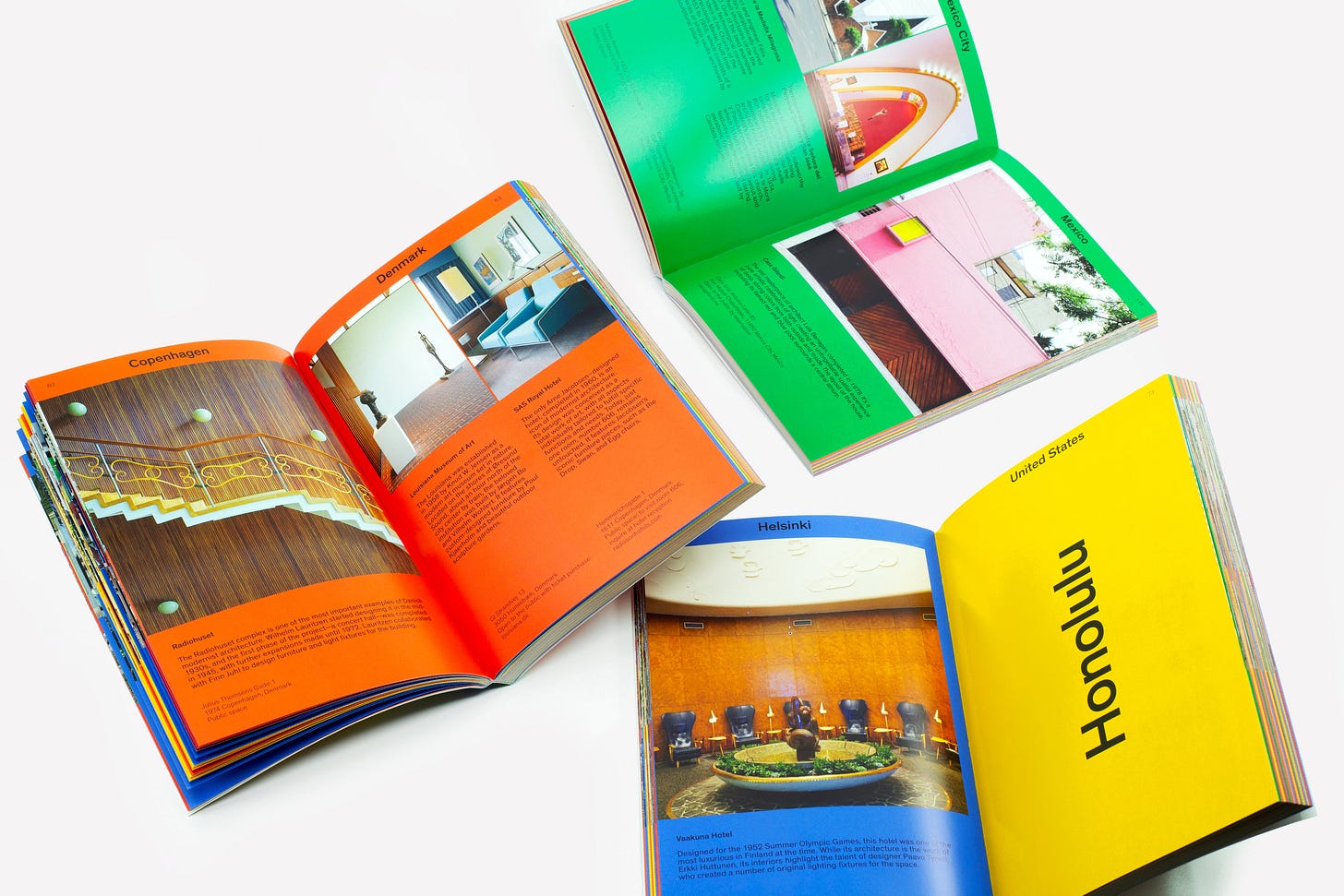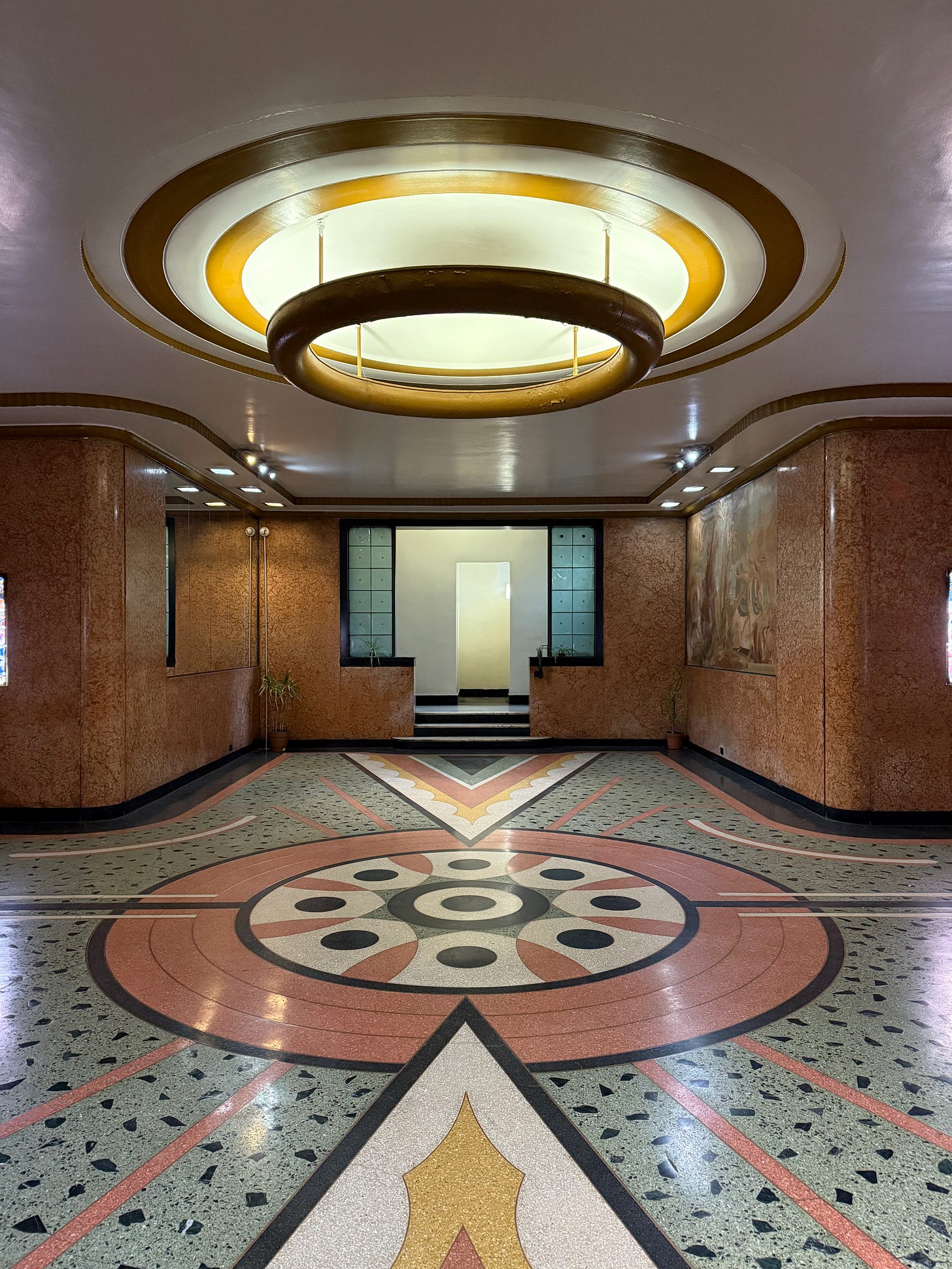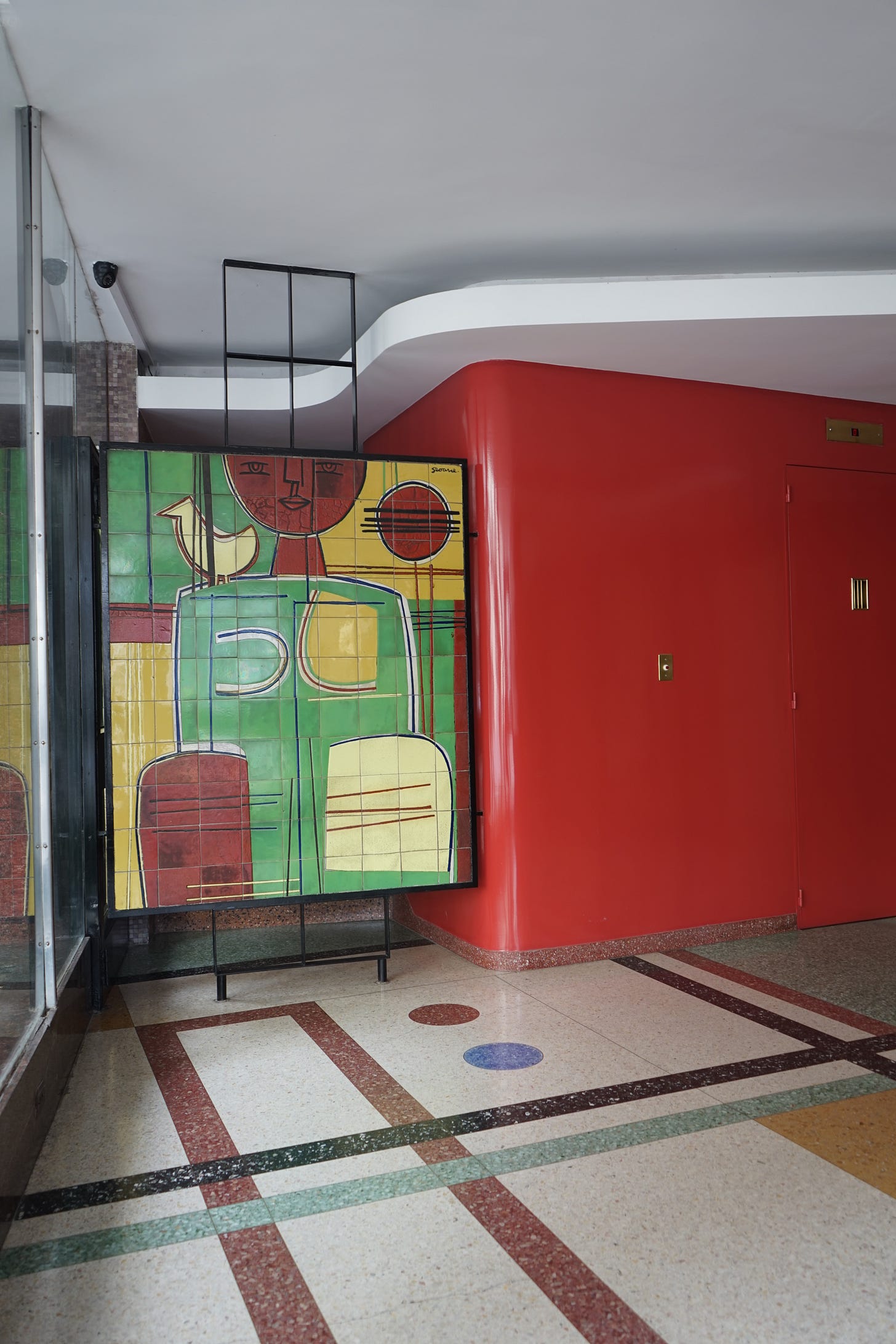The Modernist Travel Guide has all the vacation inspo you need
Let architecture expert Adam Štěch be your guide
There’s nothing that gives me quite as strong a thrill as preparing for a trip. Yes, the trip itself is plenty thrilling, but the weeks and days leading up to it, when I can meticulously research and type away in an itinerary doc and pin to my heart’s content on Google Maps feels like a way of extending the magic of vacation into regular everyday life. Once I’m there and contending with jet lag, I’m all the happier for this extra prep I put in before heading out of town.
For this reason, I was absolutely thrilled to discover that Sight Unseen’s very first book is a travel guide made by Adam Štěch, the writer and editor behind @okolo_architecture. On Instagram, Štěch has long given his followers a portal into beautifully-designed buildings the world over. In the book, The Modernist Travel Guide, he has essentially created a plug and play itinerary for architecture and design–filled trips to 30 different cities across Asia, Europe, North America, and South America. The recommendations stretch far beyond the predictable spots recommended in most design guidebooks, culled from Štěch’s decades of research, including spots he’s found in his research and those that he’s stumbled on from on his own visits to each place.
For a vacation fantasizer like myself, it’s the ideal starting point for dreaming up a next trip, whether it’s for a destination I’m already planning on visiting, or for inspiration on a city to tack onto my next journey abroad. Below, Štěch and I discuss his process in compiling The Modernist Travel Guide, his most memorable experiences photographing architecture, and his new role hosting tours in Prague.

What was your organizational process for the book?
The book is based on a very long, almost 20 years, of learning about architecture and design, because I started quite early. When I was in high school, I was fascinated by art and architecture and then design, so it's years of spending hours, days in the books, in magazines, online, gathering information.
Do you take notes for yourself as you're reading?
I always make a map in my Google Maps, and I have lots of dots over there, but of course, you find places by chance. Because I walk around cities quite a lot and it's the best to see some buildings which I would never find online or in the books. You kind of have to go there and then you explore something by chance as well. It's a mix of a lot of buildings that I’ve wanted to see for years, but also basically every day I find something new that I want to see. I would say it's a really continuous effort.
In the intro, you mentioned that you visited almost 50 countries, and obviously, there are 30 destinations included in this book. How did you narrow down what you specifically wanted to include in the guide?
I call the guide a starter pack for architecture lovers because it's just a very small portion of what I saw and what I photographed. Together with Sight Unseen, we were discussing that this guide should be really accessible for people who aren't as nerdy as me, but they like architecture, they like to travel, and they like to experience something beautiful. I was intuitively choosing cities that are popular and it's centered mostly in Europe because I live in Prague, in the center of Europe. I've visited most of Europe, but I always wanted to include South America a little bit and North America, and there is Australia, and there is some Asia too, like India and Japan.
It was kind of an intuitive selection and then each city has around 14 places. I tried to pick different typologies, so there are some house museums, public buildings, and some bars or restaurants. Also I wanted to make a diverse selection of places from different periods. It's like early modern, 1920s, something from '30s, something from '50s, something brutalist, and maybe a little bit postmodern as well. I always wanted to present each city with a very diverse selection of styles and typologies.
If someone were to pick up this book hoping to decide on a specific city to visit, are there any particular destinations that you think should be prioritized in particular for modernism lovers?
Of course, there are some favorites, but I have to say that the places I go to most often are Paris and Milan. Of course, they are super well-known cities. I've been to Paris maybe, like, 30 times or something in my life, and I always find something new and exciting. Even in Prague, I've lived in Prague for 20 years, and there are still buildings which I pass quite often, but suddenly, at some particular time I suddenly am standing in front of one, and I suddenly go, "Oh, I walk by here every day, but this building is also interesting." Prague is really, really great.
I would say my favorite city which is not as popular as Paris or Milan that's in the book, is Buenos Aires. I really love it a lot. It has a very specific atmosphere of old fashioned times and a lot of modernism, a lot of 1930s modernism, which is quite similar to what we have in Prague, but the buildings are like five stories bigger, and it's like a metropolis. From American cities, I like San Francisco for the art deco.
Are there any particularly memorable discoveries you've made in your years of exploring architecture and design around the world?
There are so many, I am fortunate that I made this hobby or this passion of mine my job and now I travel quite a lot, and almost weekly, or every other week, I'm visiting something new. So there are many, but of course, there are some very special visits.
For me, the most important part is to find places that are completely intact, like original and preserved. So for example, I visited this crazy house near Paris. I went to Paris for a one day trip, like I flew from Prague to Paris in the morning, I photographed the house, and then I flew back to Prague on the same day. It was this crazy Art Deco villa. It was from 1937, very bizarre architecture with a lot of decoration and very crazy details. It was absolutely amazing. This was a planned visit, where I got in touch [ahead of time] and so on. I also visit houses by chance, where I just knock on the door and ask people if they will let me in because I am an architecture historian. This is a successful strategy most of the time.
For example, I got into a house in Tokyo. The homeowner was an almost 80 year old lady. She didn't speak any English, but she somehow understood what I'm interested in and she let me in the house. Then she left the house, she left me in the house for like 10 minutes alone. It was a completely authentic house by an architect who was working for Frank Lloyd Wright before. She came back with a neighbor, a younger lady, and she spoke in English and translated. We were talking and at the end, I found out that she was the housekeeper of that architect, and when he died, he left the house to her. She was so respectful that she kept the house exactly as it was. Of course [my travels are] about architecture, it's what I am going for, and I want to document these places, but another layer is meeting those people.
You also host architecture walking tours in Prague, right?
Yes, we started this quite recently. It's called modernist Prague. We have a few versions of guided tours. It's mostly for local people right now, we also have English versions, but we are just starting. In the last 10 years I've seen such progress in the public seeing architecture here, suddenly the public is more interested in it.
You were saying that you've lived in Prague for 20 years, yet there's still so much you're excited about seeing and exploring in the city. For people who've never been, what do you think sets Prague apart from other cities?
Prague is a gem. I really didn't fully understand it until COVID because COVID canceled all my travel plans and everything. Of course, I knew that there was always a big legacy of modern architecture in Prague, or in Czechoslovakia in general. Of course, I knew a lot of things about it, and I had visited a lot of places here before, but through COVID I found out about 500% more. I’ve traveled to Argentina, Morocco, Japan, Australia to see the buildings, but I have so many beautiful buildings here in Prague. It was the start of really appreciating and understanding architecture in Prague.
It's this paradox, when you live somewhere, you take it for granted somehow. Prague is amazing in how rich the architectural legacy is here. You can be on one street and have a Romanesque small church from the 12th century, then you have a gothic palace from the 14th century, then you have a renaissance palace. Then you have a baroque church from the 18th century, you have a bunch of buildings from the 19th century, which are in the eclectic historical styles, then you have a modernist building from the 30s, and maybe at the end of the street is the 1960s brutalist building. We have streets like this everywhere, almost. It's so connected together.









